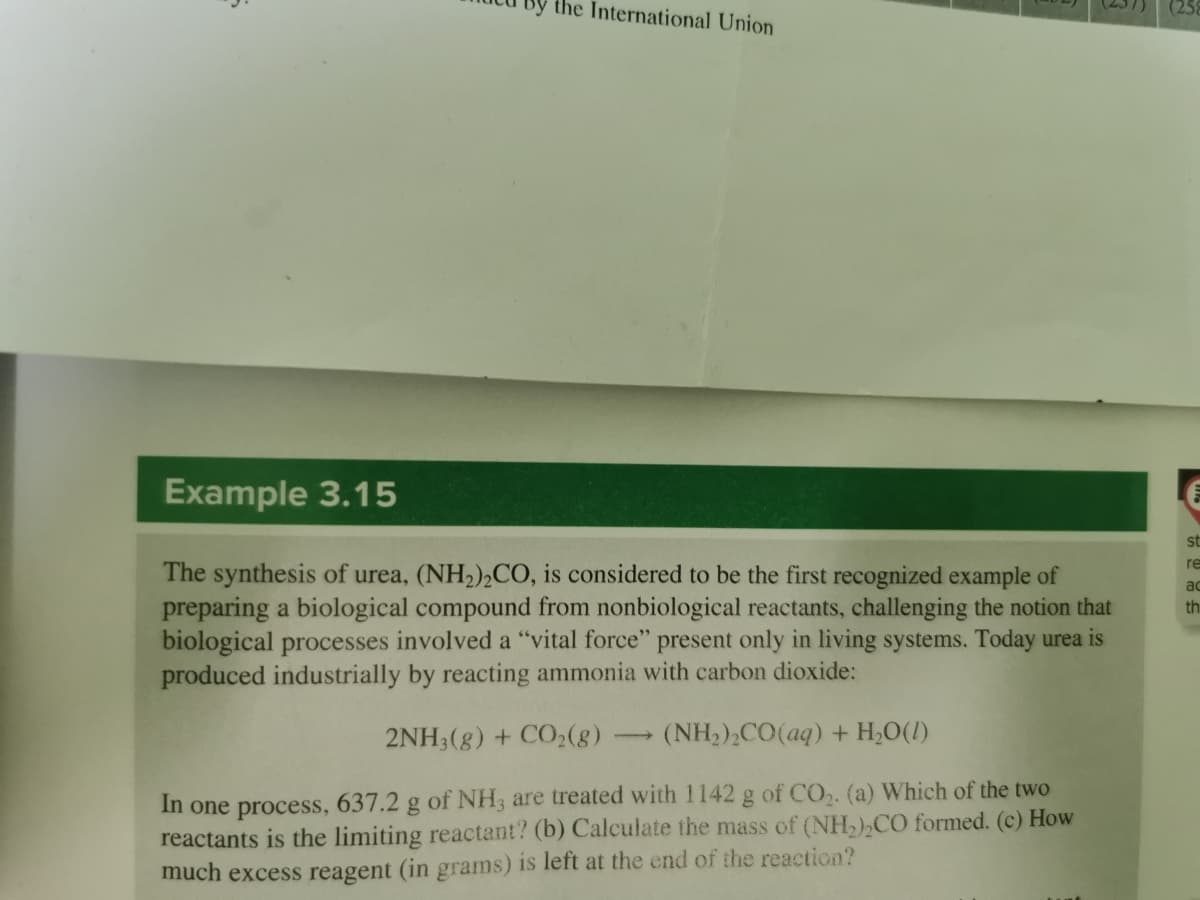2NH3(g) + CO2(g) - (NH)),CO(aq) + H,0(!) In one process, 637.2 g of NH3 are treated with 1142 g of CO. (a) Which of the two reactants is the limiting reactant? (b) Calculate the mass of (NH,),CO formed. (c) How much excess reagent (in grams) is left at the end of the reaction?
2NH3(g) + CO2(g) - (NH)),CO(aq) + H,0(!) In one process, 637.2 g of NH3 are treated with 1142 g of CO. (a) Which of the two reactants is the limiting reactant? (b) Calculate the mass of (NH,),CO formed. (c) How much excess reagent (in grams) is left at the end of the reaction?
General Chemistry - Standalone book (MindTap Course List)
11th Edition
ISBN:9781305580343
Author:Steven D. Gammon, Ebbing, Darrell Ebbing, Steven D., Darrell; Gammon, Darrell Ebbing; Steven D. Gammon, Darrell D.; Gammon, Ebbing; Steven D. Gammon; Darrell
Publisher:Steven D. Gammon, Ebbing, Darrell Ebbing, Steven D., Darrell; Gammon, Darrell Ebbing; Steven D. Gammon, Darrell D.; Gammon, Ebbing; Steven D. Gammon; Darrell
Chapter5: The Gaseous State
Section: Chapter Questions
Problem 5.161QP
Related questions
Question

Transcribed Image Text:the International Union
(25
Example 3.15
st
The synthesis of urea, (NH2),CO, is considered to be the first recognized example of
preparing a biological compound from nonbiological reactants, challenging the notion that
biological processes involved a "vital force" present only in living systems. Today urea is
produced industrially by reacting ammonia with carbon dioxide:
re
ac
th
2NH3(8) + CO2(g)
(NH,),CO(aq) + H,O(1)
>
In one process, 637.2 g of NH3 are treated with 1142 g of CO,. (a) Which of the two
reactants is the limiting reactant? (b) Calculate the mass of (NH,),CO formed. (c) How
much excess reagent (in grams) is left at the end of the reaction?
Expert Solution
This question has been solved!
Explore an expertly crafted, step-by-step solution for a thorough understanding of key concepts.
This is a popular solution!
Trending now
This is a popular solution!
Step by step
Solved in 4 steps

Knowledge Booster
Learn more about
Need a deep-dive on the concept behind this application? Look no further. Learn more about this topic, chemistry and related others by exploring similar questions and additional content below.Recommended textbooks for you

General Chemistry - Standalone book (MindTap Cour…
Chemistry
ISBN:
9781305580343
Author:
Steven D. Gammon, Ebbing, Darrell Ebbing, Steven D., Darrell; Gammon, Darrell Ebbing; Steven D. Gammon, Darrell D.; Gammon, Ebbing; Steven D. Gammon; Darrell
Publisher:
Cengage Learning

General Chemistry - Standalone book (MindTap Cour…
Chemistry
ISBN:
9781305580343
Author:
Steven D. Gammon, Ebbing, Darrell Ebbing, Steven D., Darrell; Gammon, Darrell Ebbing; Steven D. Gammon, Darrell D.; Gammon, Ebbing; Steven D. Gammon; Darrell
Publisher:
Cengage Learning